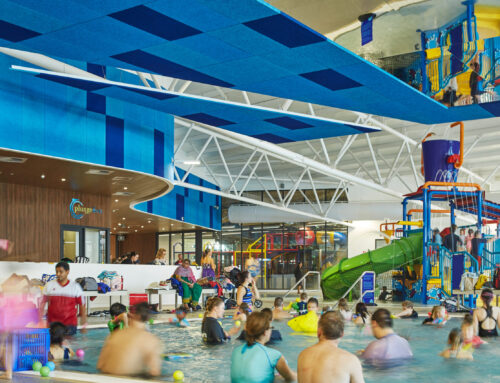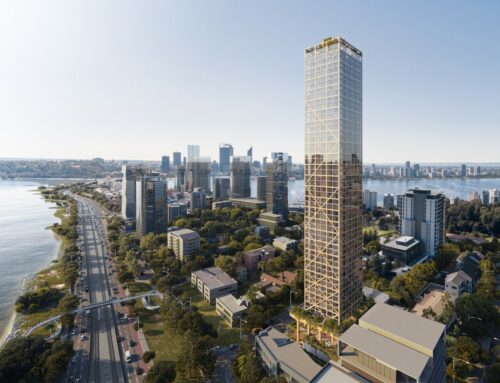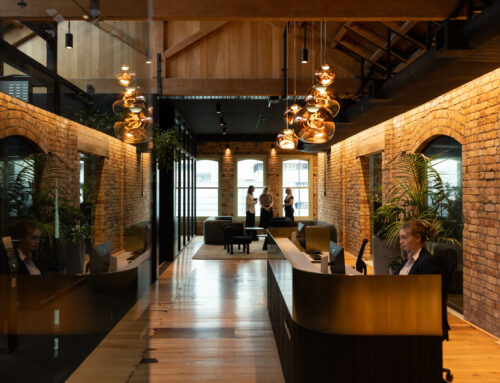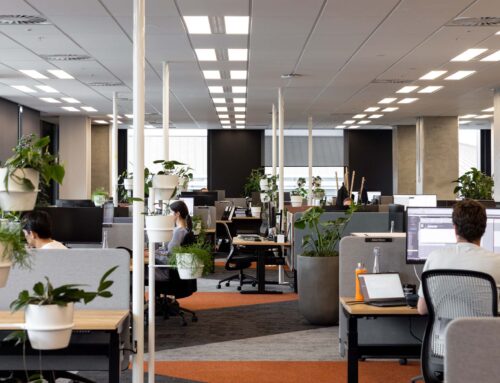Tackling 21st century crime requires precision and the latest in forensic capabilities. And at the front line are law enforcement professionals who rely on the latest technologies. When it came to building a new forensics facility in Canberra for the Australian Federal Police, reliability and resilience were paramount.
“The Australian Federal Police (AFP) forensics facility in Weston had reached the end of its workable life,” says NDY director Bruce Penglis. “It was overcrowded and prevented the use of the latest forensic methods, so a new facility was vital for the AFP. NDY was called upon to provide to provide the engineering smarts on the AFP’s new forensics facility in Majura, Canberra.”
Working with project partners Cockram builders, Hassell architects and RPS Project Management, NDY was tasked with the services design for the new purpose built 7,500 sq m facility that would provide exemplary forensic capabilities for the next 30 years of operation.
“It also had to function as a secure data centre, incorporate offices, computing labs, audio analysis, an indoor ballistics range, and a cutting edge laboratory,” adds Penglis “with the capability to use the latest forensic methods, including specialist DNA ‘low copy number’ analysis, culturing of microorganisms, and trace element profiling. These procedures require ‘clean rooms’ to be free of all possible contaminants.”
A Challenging Space
With such a long list of requirements, and a very strict level of compliance needed, it’s easy to understand that this project would be a challenging undertaking. Penglis was well aware of the magnitude of the task.
“To enable the facility to fulfill its purpose, we knew a strong collaborative approach between NDY and the other stakeholders was required.
“From an engineering perspective, our focus was always to provide the best possible environment for the myriad of highly specialised workspaces.”
Each room of the forensics facility has a specific function – and each space is required to complement adjacent areas, without any negative impact to other spaces. Contamination of a single sample could be catastrophic for the investigation process, and unlike a standard lab environment, the processes are unlikely to be repeatable should the sample be compromised by contaminants.
Under Pressure
The evidence examination rooms within the labs are kept under positive atmospheric pressure, while the surrounding spaces are maintained under negative air pressure, to ensure that no airborne contaminants entered the working area. “This means the airflow in the rooms is rapid enough to avoid the build up of any waste gasses or airborne particles, while still maintaining the air pressure at the required level,” adds Penglis.
“This system had to factor in pressure loss from a door to the lab opening, or the use of a ventilation hood, which required a finely balanced set of tolerances for the system to keep it stable, yet effective.”
Due to the energy requirements of this system, the laboratory spaces were all enabled with variable ventilation settings, that could be stepped down or set back when this level of air filtration and pressure regulation was not needed, or the room was not in use.
Penglis explains the benefits of the design:
This strategy allows for occupants to move between areas to collaborate, and continue the examination process in adjoining environments, while reducing the risk of contaminating the evidence.
High Traffic Flow Security
The building is required to handle a large volume of traffic, while still adhering to the strict security measures imposed by a federal law enforcement facility. Access had to be restricted to allowable areas, while still permitting free movement where required, and in the event of an emergency. The security requirements proved challenging to the Fire Safety team, however, with a strong collaborative focus, they were able to implement egress strategies and fire containment solutions that satisfied the AFP’s security requirements.
“We had to integrate with the AFP’s systems, most of which had no room for compromise due to the nature of the facility, but by frequent consultation with key stakeholders, we were able to refine a suitable system that addressed the fire safety requirements, and accommodated the needs of the AFP,” says Barney Stranger, NDY’s Fire Safety engineering lead for the project. ”We had to ensure that the emergency exit strategy didn’t compromise the security of the facility, and also that the location of the sprinklers, fire hose reels and other fire safety equipment could quickly suppress fires, without destroying evidence in areas that were not under threat.”
Wired for Quiet
The Audio Visual (AV) Laboratories are located near an open plan office environment. A key feature here was to ensure that the space was acoustically and vibrationally isolated from the office space.
The AV labs are also insulated against radio transmissions from the neighbouring airport, and similarly, transmissions from the forensic complex could not be allowed to interfere with that of the airport traffic control.
“This required careful planning around radio emanations of all equipment and facilities,” says Thomas Warren, NDY Acoustic consultant. “It also included AV labs that had full radio frequency shielding, along with the sound and vibration absorption, all while meeting the structural requirements of the building, and creating a pleasant workspace.”
Handle with Care
The facility required the capability to handle various forms of hazardous materials in laboratory areas, from biological matter through to radioactive material.
“Integrating the necessary safety features, such as blast cabinets and secure storage was a challenging part of the project,” says Mr Stranger. “It had to be implemented without compromising the efficiency of the workspaces, or creating a safety hazard, which is a complex problem when dealing with these sorts of materials.”
Fire in the Hole
Ballistics are a key component of forensic examination and form an integral part of this new facility. The ballistics range is required to handle a large variety of weaponry, while trapping the gun shot residue and exhaust gasses from escaping into the rest of the complex, potentially compromising evidence.
To achieve this, the behaviour of airflow and gunshot exhaust was modelled using Computational Fluid Dynamics (CFD) with the optimal airflow supply level determined to ensure that the particles discharged from firing the weapon were pushed away from the entrance. “It was important to achieve this whilst simultaneously keeping the velocity low enough to avoid particles blowing back from turbulence,” says Richard Jelbert, NDY’s Senior Associate and computer modelling consultant.
“External wind modelling was also undertaken to ensure that the air extracted from the ballistics area was not recirculated into the laboratory air intakes. We had to take into account wind patterns, exit velocity and a host of other factors to ensure this didn’t happen.
The resulting ballistics range operates at high capacity (and caliber) without compromising the other forensic examination spaces in the building.
Working with People
All of these unique requirements are an exacting demand on any design. Add in a requirement for a 4.5 NABERS rating, and the engineering smarts of the team were brought to the fore.
“With all these requirements, the design could have easily ended up looking sterile and barren,” says Penglis. “But the usage of different materials and features to create a comforting environment has resulted in a space that has been shortlisted for several awards in the sustainability and innovation categories.”
A Facility that Makes a Difference
Penglis has extended his congratulations to all of the team involved in the project; “Despite all the challenges and obstacles, the end result is a facility that makes a difference. It’s aesthetically pleasing, provides a working environment that supports occupant wellbeing, and enhances the capabilities of the AFP.”
Key collaborative team
Client: Australian Federal Police
Project Manager: RPS Project Management
Architect: Hassell
Structural Engineer: AWT
Engineering Services: NDY
Services provided by NDY
- Acoustics
- Audio Visual
- CFD Modelling
- Electrical
- Fire Engineering
- Fire Protection
- Hydraulics
- ICT
- Mechanical
- Medical gases
- Sustainability
- Vertical Transportation
Photo(s) courtesy of the AFP










